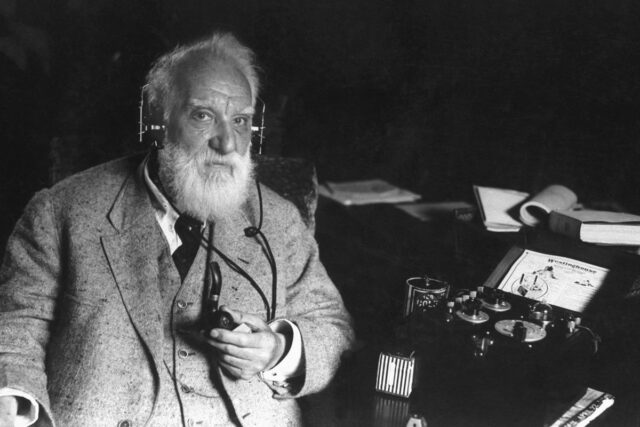
What makes a person an inventor? Is it a knack for tinkering, a love for creating, or is it a special mindset? In this blog post, we’ll explore what goes into the inventor’s mindset. We’ll break down various elements that fuel the creative process, such as curiosity, problem-solving, and keen observation. Understanding this mindset can improve various aspects of your life, whether you’re looking to innovate in business, enhance your personal projects, or even solve everyday problems. By the end of this post, you’ll have practical tools and insights to think more like an inventor.
The Curiosity Factor
Curiosity is the engine that drives innovation. Ever wonder how a microwave works or why traffic jams occur? These kinds of questions can spark new ideas. Thomas Edison, for example, was always curious. He conducted numerous experiments before inventing the light bulb. He asked questions, sought answers, and wasn’t afraid to challenge conventional wisdom. His curiosity led him to invent products that transformed the world. So, the next time you’re curious about how something works, follow that instinct. Research it, question it, and gather additional information. Curiosity might lead you to your next big idea.

Problem-Solving as a Driver
Recognizing a problem is the first step toward coming up with an innovative solution. For instance, the Wright brothers identified the problem of human flight. Their problem-solving efforts led to the invention of the airplane. This approach is practical because it starts with a need. Inventions born out of problem-solving tend to have a ready market. You don’t have to look far to find a problem that needs solving. It could be as simple as finding a more efficient way to organize your workday or as complex as tackling climate change. So start identifying problems and brainstorm solutions. Your answer could be the next great invention.
Observing the World
Paying close attention to the world around you can also inspire inventive ideas. Take Leonardo da Vinci, a man of many talents, including invention. His detailed observations of nature and human anatomy led to designs of various machines, including an early concept of the helicopter. Even in your daily life, observing small details can spark big ideas. Maybe you’ve noticed how people struggle with current public transport. What if you could design something better? Observing the world is like gathering pieces for a creative puzzle. The more pieces you have, the clearer the bigger picture becomes.
Learning from Failure
Don’t be afraid of failure; it’s a part of the creative process. James Dyson went through 5,126 failed prototypes before he invented his groundbreaking vacuum cleaner. Each failure taught him something new. Likewise, setbacks can offer valuable insights into what doesn’t work, pushing you closer to a solution that does. So if you encounter obstacles, don’t get discouraged. Consider them stepping stones toward your ultimate goal.

Collaborative Thinking
Great ideas often come from teamwork. The invention of the computer was not the work of one person; it came from the combined efforts of people like Alan Turing, John Atanasoff, and Grace Hopper. When people with different skills and perspectives work together, they can generate solutions that one person might not have thought of alone. To foster collaboration, try brainstorming sessions with colleagues or friends. Different viewpoints can trigger new directions in idea generation.
Leveraging Technology
Modern technology provides tools that can help in idea generation. The internet alone is a treasure trove of information and inspiration. Websites, online courses, and even social media can provide insights into what people need or what problems exist that you can solve. There are also specialized software and apps designed to facilitate creative thinking. You can find step-by-step guides, how-to videos, and other resources on this website to help you along your creative journey. Use these tools to your advantage.
Creativity Exercises
Feeling stuck? Try some simple creativity exercises to jump-start your thinking. One popular method is the “Six Thinking Hats” by Edward de Bono, which encourages you to think from different perspectives. You can also try free writing, where you write down all your thoughts without stopping for a set period. These exercises are easy to do and can yield surprisingly effective results.

The Power of Mind Mapping
Mind mapping is a useful tool for brainstorming that has gained popularity in various fields. Start with a central concept in the middle of a page and draw branches outwards that represent related ideas, themes, or categories. This tree-like visual representation can help you see connections between ideas that you might have missed otherwise. It’s an excellent method for organizing your scattered thoughts into a cohesive structure. What’s more, the collaborative potential of mind mapping makes it easier to work with teams, ensuring everyone’s ideas are on the table. By turning a vague idea into a structured plan, mind mapping paves the way for actionable steps toward innovation.
Seeking Inspiration from Nature
Nature is an abundant and often untapped source of inspiration for inventors. The concept of biomimicry is fascinating; it involves emulating natural designs to solve intricate human problems. Take Velcro as a classic example; this ingenious invention was inspired by the way plant burrs stick to animal fur. By observing and studying nature, you can discover elegant solutions to complex issues that humans face. So, consider stepping out of your usual workspace; even a simple walk in the woods or spending some time observing animals and their habitats might just spark your next groundbreaking idea.
Embracing Change and Adaptation
In a world that’s constantly evolving, adaptability is a non-negotiable trait for any aspiring inventor. Markets change, new technologies replace old ones, and user feedback can steer your invention in entirely new directions. Let’s consider Alexander Graham Bell. He initially invented the telephone as an aid for the deaf but adapted the device when he recognized its broader communication potential. Being open to change not only improves your inventions but also opens doors to new opportunities and ideas. Embracing this flexibility allows you to refine and modify your ideas continually, making them increasingly innovative and practical.

Conclusion
We’ve explored the many facets of the inventor’s mindset: from the role of curiosity and problem-solving to the importance of observation and collaboration. It’s clear that anyone can cultivate this mindset. Start asking questions, identifying problems, and collaborating with others. Leverage technology and try out simple creativity exercises. Embrace failure as a learning experience and be open to change. By adopting these principles, you’re well on your way to becoming an inventor in your own right.









